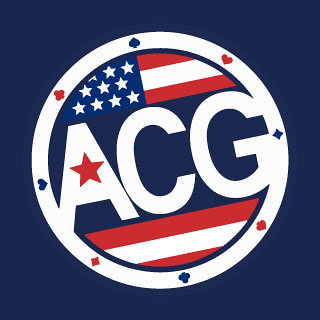Does the constant ache in your neck make it hard even to turn your head? Neck pain is a common problem that can significantly disrupt your daily life, making simple tasks like sleeping, driving, or working at a computer feel like a chore. But don't despair! There are practical solutions available. This article will explore how physiotherapy and dry needling can work together to relieve neck pain.
Understanding Your Neck Pain: A Deep Dive
Neck pain is a prevalent issue, affecting millions of people worldwide. It can range from mild annoyance to debilitating conditions significantly impacting daily life. Understanding its underlying causes and different types is crucial to addressing neck pain effectively.
The Complexities of Your Neck:
Your neck, also known as the cervical spine, is a marvel of engineering. It houses seven vertebrae stacked on each other, separated by intervertebral discs that act as cushions. Numerous muscles, ligaments, and tendons support and allow movement in your neck. This intricate structure enables a wide range of motion, allowing you to turn your head, nod, and tilt it to the side. However, this flexibility also makes the neck vulnerable to injury and strain.
Common Culprits Behind the Ache:
Several factors can contribute to neck pain. Here's a closer look at some of the most common culprits:
Musculoskeletal Issues:
Muscle strain: Overexertion, repetitive movements, or poor posture can strain neck muscles, causing pain and stiffness.
Trigger points are tight knots in your muscles that can develop due to injury, overuse, or stress. They can be a significant source of neck pain and may also refer pain to other areas like your head or shoulders.
Cervical spondylosis: This age-related condition involves wear and tear of the discs and joints in your neck. It can cause stiffness, pain, and sometimes radiating pain to the arms.
Injuries:
Whiplash: This is a common neck injury caused by a sudden jolt to the head, often occurring in car accidents. It can cause pain, stiffness, and headaches.
Herniated disc: When the soft inner disc material bulges out of the vertebrae, it can press on nerves in your neck, causing pain, numbness, and weakness in your arms and hands.
Other Causes:
Poor posture: Slouching for extended periods can strain your neck muscles, leading to pain and stiffness.
Arthritis: Inflammatory conditions like rheumatoid arthritis can affect the joints in your neck, causing pain and stiffness.
Stress: Chronic stress can contribute to muscle tension and pain, including in the neck.
Understanding the Different Types of Neck Pain:
Neck pain can manifest in various ways, depending on the underlying cause. Here are some common types:
Acute neck pain typically appears suddenly and is often caused by a strain or injury. With proper treatment, it usually resolves within a few days or weeks.
Chronic neck pain: This type of pain persists for over three months and can significantly impact daily activities. Various factors, such as arthritis, muscle tension, or nerve compression, may cause it.
Radiating pain: This pain starts in the neck and travels to other areas, like the shoulders, arms, or head. It can signify a pinched nerve or a more severe condition.
Stiffness: Difficulty turning your head or moving your neck freely is a common symptom of neck pain. It can be caused by muscle tension, inflammation, or arthritis.
When to Seek Professional Help
If your neck pain is severe, persists for more than a few weeks, or worsens over time, it's crucial to seek professional help. Early diagnosis and treatment can prevent complications and accelerate your recovery. Here are some red flags that warrant a visit to a physiotherapist or doctor:
Radiating pain: Pain that travels down your arms or hands could indicate nerve compression and requires professional assessment.
- Numbness or weakness in your arms or hands can signal nerve compression and require professional attention.
Loss of balance or coordination: If you experience difficulty with balance or coordination alongside neck pain, you must see a doctor to rule out any underlying neurological conditions.
Fever or chills: If your neck pain is accompanied by fever or chills, it could be a sign of an infection and requires immediate medical attention.
By understanding the potential causes and different types of neck pain, you can be more proactive in managing your symptoms and seeking professional help when necessary. Early intervention is critical to achieving optimal recovery and preventing future episodes.
Physiotherapy: Your Partner in Pain Relief
Physiotherapy is a treatment that focuses on restoring movement and function using non-invasive techniques. Here's how a physiotherapist can help you find relief from neck pain:
Assessment: During your first appointment, the physiotherapist will thoroughly assess your condition. This may involve discussing your medical history, performing physical tests, and observing your posture and movement patterns.
Treatment plan: Based on the assessment, the physiotherapist will develop a personalized treatment plan tailored to your needs.
Manual therapy: This involves hands-on techniques like massage, joint mobilization, and stretching to improve flexibility, reduce muscle tension, and alleviate pain.
Strengthening exercises: Strengthening the muscles that support your neck can improve posture and prevent future pain episodes.
Education: Your physiotherapist will also educate you on proper posture, ergonomic tips, and exercises you can do at home to manage your pain and prevent recurrence.
Dry Needling: A Targeted Approach
Dry needling is a technique that uses thin needles to target specific points in your muscles called trigger points. These trigger points are tight knots that can develop in response to injury, overuse, or even stress. When stimulated by the needles, these trigger points can twitch and release, leading to pain relief and improved muscle function.
While dry needling might sound intimidating, it's a safe and effective approach when performed by a qualified physiotherapist trained in the technique. Here's how dry needling can benefit your neck pain:
Targets the source: Dry needling directly addresses trigger points, which are believed to be a significant contributor to neck pain.
Pain relief: The stimulation from the needles can help relax the muscles, decrease pain signals, and provide immediate relief.
Improved mobility: Dry needling can improve your range of motion in the neck by releasing tight muscles, making it easier to turn your head and move more freely.
The Power of Combining Forces
Physiotherapy and dry needling are potent tools that can be used individually or in combination for optimal results. Here's why combining these approaches might be beneficial:
Comprehensive approach: Physiotherapy addresses the underlying causes of your neck pain, while dry needling provides targeted pain relief.
Faster results: Combining these techniques can accelerate your recovery and get you back to your pain-free life sooner.
Long-term benefits: Physiotherapy helps you develop self-management strategies to prevent future pain episodes.
What to Expect During Treatment
Initial Physiotherapy Consultation: During your first appointment, the physiotherapist will discuss your symptoms, medical history, and daily activities. They will then assess your posture, range of motion, and muscle strength in your neck.
Dry Needling Procedure:
- The physiotherapist will explain the procedure and answer any questions you may have.
- They will then use a thin, sterile needle to target specific trigger points in your neck muscles.
- You may feel a cramp or cramping sensation during the insertion, but this is usually brief and tolerable.
- The needles are typically inserted for a few seconds or minutes and then removed.
- Post-Treatment Care: After your treatment, you may experience some mild soreness or discomfort, usually temporary. Your physiotherapist will advise you on self-care tips to manage post-treatment discomfort, such as applying ice or heat packs.
- They will also likely prescribe specific exercises you can do at home to maintain the benefits of treatment and prevent future pain episodes.
The Road to Recovery
The number of physiotherapy and dry needling sessions will depend on the severity of your neck pain and your response to treatment. Generally, you can expect improvement within a few sessions, but some cases may require a more extended treatment plan.
Here are some additional points to remember:
Be open and honest: Communication is critical. Inform your physiotherapist about any concerns you have or if you experience any unusual side effects.
Listen to your body: Don't push yourself too hard. Take rest days when needed and avoid activities that aggravate your pain.
Patience is vital: Recovery takes time. Stick with your treatment plan and be patient with your progress.
Living Pain-Free
Neck pain can be a real drag, but with the right approach, you can find relief and get back to enjoying life. Physiotherapy and Dry Needling & IMS Therapy used together or individually, can be powerful tools in your pain management arsenal. Consulting a qualified physiotherapist is crucial for a proper diagnosis and personalized treatment plan. By working closely with your physiotherapist and actively participating in your recovery, you can overcome neck pain and live a pain-free life.






